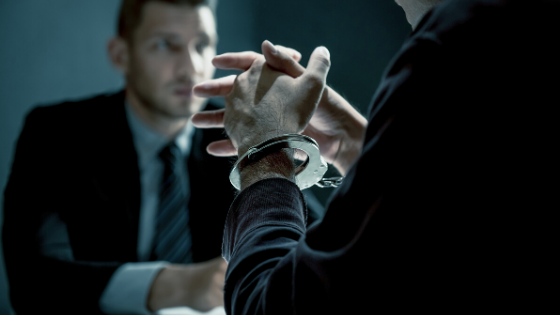As the justice system evolves to meet the demands of a rapidly changing world, so too must the buildings that house it. The concept of a "smart courthouse exterior" goes beyond aesthetics—it integrates technology, sustainability, security, and public accessibility right from the building’s facade and surrounding spaces.
From energy-efficient lighting and integrated surveillance systems to thoughtful landscaping and wayfinding features, the modern courthouse exterior is designed to enhance safety, functionality, and civic presence in the surrounding community.
In my last blog we explored smart features in the courthouse lobby and public spaces. Here, we’ll explore how smart exterior design is reshaping the face of courthouses for the 21st century.
First Impressions
One thing I’ve learned as a courthouse planner is that first impressions matter—especially when it comes to civic buildings like courthouses. The exterior of a courthouse sets the tone for what visitors, jurors, and the public can expect inside.
A growing number of courthouses that I’ve visited across the nation are using smart technology features on the courthouse exterior, sending a clear message to building users that the courthouse is functional, well cared for, and secure. From the moment someone approaches the building, elements like smart lighting, digital wayfinding, and landscape design shape their sense of safety, clarity, and confidence in the institution.
Let’s take a look at examples of some smart features that can be used on the courthouse exterior.
Smart Courthouse Exterior Features
Smart Courthouse exterior features are designed to maximize security, accessibility, sustainability, and efficiency before people even enter the facility. Below are some emerging smart features used on the exterior of courthouses:
- Smart security systems: Perimeter surveillance with license plate recognition (LPR) and AI-powered cameras for facial recognition and behavior analytics (e.g., detecting loitering or unattended items) can be installed to enhance security, monitor suspicious activities in real-time, and provide valuable data for court security personnel.
- Automated barriers and bollards: When barriers and bollards are equipped with Radio Frequency Identification (RFID) or biometric access control, they provide a secure and efficient method for controlling vehicle entry into sensitive areas within and around the courthouse. By automatically raising or lowering for authorized vehicles, these systems enhance security while streamlining access for court security personnel, judges, employees, and other approved individuals. These features reduce the risk of unauthorized entry or potential vehicular threats.
- Drone detection systems: Drones can be used on the exterior of courthouses to unlawfully gather information about the interior of the courthouse and its occupants. Drone detection systems can be employed at high-security courthouses or during high-threat proceedings. These detection systems provide a critical layer of protection by identifying, tracking, and even neutralizing potential threats, ensuring that the courthouse remains secure from aerial surveillance or delivery of harmful materials. The systems can be integrated with local law enforcement to provide real-time incident alerts.
- Wayfinding and accessibility: Outdoor interactive digital kiosks can help visitors navigate the courthouse grounds - particularly in large judicial complexes where multiple court components are housed. Additionally, large outdoor LED or e-paper displays can show court schedules, alerts, weather, or security messages. Smart lighting that adapts for time of day and pedestrian activity improves safety and energy use. Tactile paving, voice-guided paths, and sensor-triggered crosswalk signals can be provided to assist visitors with disabilities.
- Environmental sustainability features: Smart irrigation systems that adapt to the weather and soil moisture can be installed on courthouse grounds. Rainwater harvesting systems and permeable pavements can be used to manage water runoff on the site. Solar panels or wind turbines integrated into the courthouse design can be used to power exterior lighting or other parts of the facility. Green roofs assist with temperature regulation. An added bonus of green roofs for courthouses is that they create valuable green space in urban areas, enhancing the aesthetic appeal.
Final Thoughts
I have never seen a courthouse with all the smart features listed above but one recent visit stands out. From the moment I arrived, a digital kiosk at the entrance made a strong first impression, displaying real-time court schedules and an interactive map that helped to navigate the large complex. As I walked the site in the morning and again after meetings in the late afternoon, I noticed the smart lighting system subtly adjusting to foot traffic, creating a safe and welcoming atmosphere without wasting energy. When I met with courthouse security, I observed how AI-enabled cameras were being used to analyze the behavior of people approaching the building, flagging suspicious behavior and generating an alert if the AI system identified a concern. It was the rare experience where technology didn’t just exist—it worked together to elevate the entire public-facing side of the courthouse.
As courthouses continue to evolve to meet the needs of a modern society, the importance of a thoughtfully designed, technology-driven exterior cannot be overstated. These smart features not only bolster security and operational efficiency but also contribute to public trust by making courthouses more accessible, sustainable, and welcoming. By embracing innovation on the outside, courthouses signal a commitment to progress, transparency, and community engagement—values that are essential to the justice system itself. In this way, the smart courthouse exterior presents a positive first impression and serves as a vital extension of the mission of justice.



.jpg)

.jpg)
.jpg)
.jpg)
.jpg)
.jpg)
.jpg)


-1.jpg)
.jpg)
.jpg)

